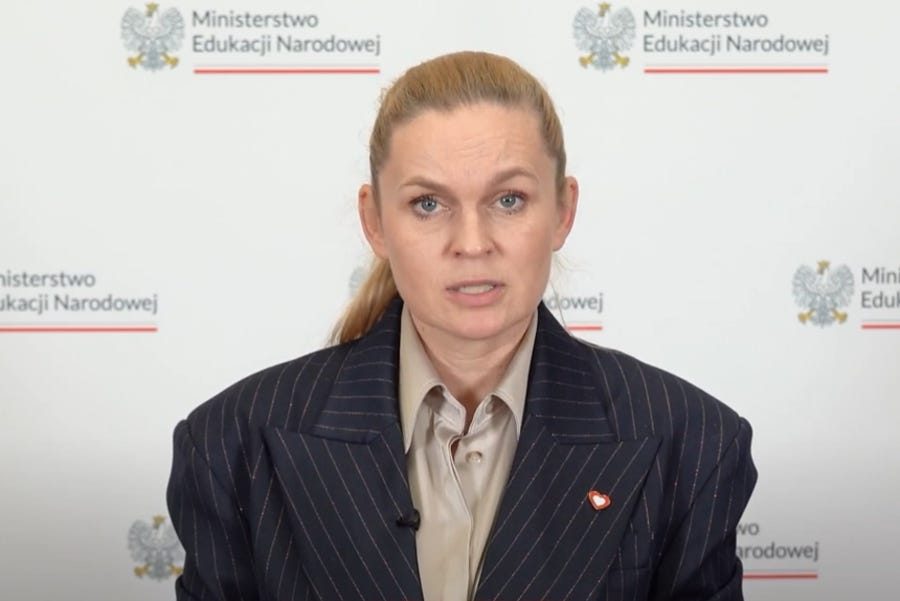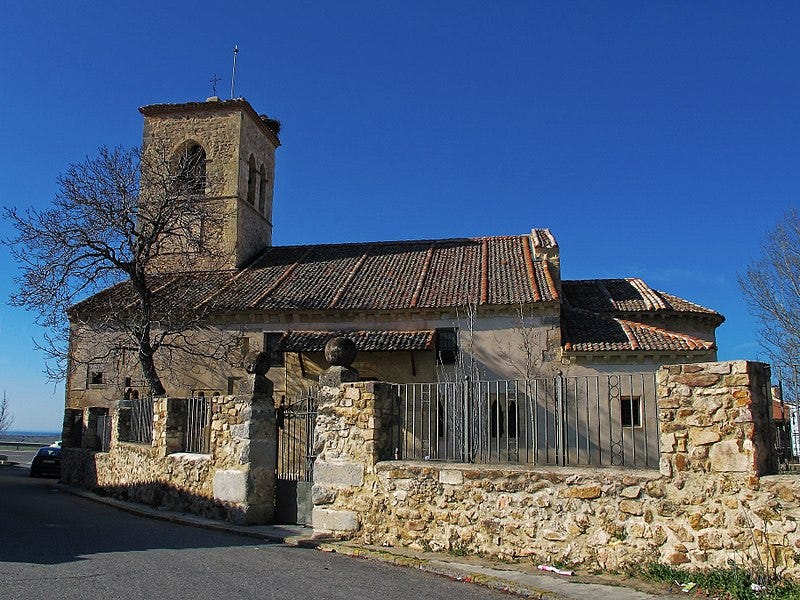
Happy Friday friends,
I’d like to begin by addressing a point of etiquette.
As some of you may know, I live in the general vicinity of Washington, D.C. One of the more common stereotypes about this city is that people are forever attending “cocktail parties” where, apparently, in-crowds of one sort or another gather in plush salons to rub shoulders, cheeks, and sundry parts over booze and take turns affirming one another’s genius.
Perhaps as a testament to my misanthropy, I’ve never actually been to a “cocktail party” in D.C., or even been invited — JD did once offer me as a replacement for him at one, but he withdrew the offer after he became convinced I was going to show up in a toga.
That’s for another newsletter.
But I have attended numerous “cocktail hours” at the kind of fancy black tie awards dinners to which people like me are asked by friends to serve as seat warmers.
October through November is high season for such events in Washington, and I go more or less willingly when I have to.
But nothing, nothing, irritates me more than arriving at a “cocktail hour” to find no actual cocktails are on offer.
I am not, as serial readers of this newsletter know, much of a social creature. Generally speaking, being cast loose in a room to “mingle” before dinner gives me the absolute horrors. But the prospect of a properly dry martini (gin, not vodka, lemon peel, never olives) or a Manhattan (my Grandfather’s drink, and maybe this country's greatest contribution to civilization) will usually make it better.
So imagine my frustration, after finally fighting to the front of the line at the bar, at being offered only tepid wine, or beer served in a bottle. Are we tailgating a NASCAR rally? I mean, really, who does this? Why — WHY — do they deceive guests with promises of drinks they have no intention of serving? It’s just rude.
Now don’t misunderstand me. I’m fine with beer and vin ordinaire. I’m not a snob. And I get it that some organizations might not want to drop patrons’ cash on a full bar. But why not just make it a cash option? I’d happily pay a markup for a good cause (or just for the sweet relief) and I usually end up in the hotel bar anyway, paying punters’ rates for the drinks I want.
Otherwise, just have a less formal event. The juxtaposition of black tie and Budweiser is rather more “DC” than I can get used to.
I’m told that “cocktail hour” is something of a term of art in this country, meaning just a period of standing and milling before or after the main event. And I could make my peace with that if it was consistently used ironically to mean “no cocktails” — like calling Congressmen “honorable” or burlesque patrons “gentlemen."
But about a quarter of the time actual drinks are served, so you can never be sure. The uncertainty introduces a layer of anxiety to the entire affair.
The news
Cardinal Joseph Zen was back in court in Hong Kong this week. The 90-year-old cardinal remains on trial for allegedly failing to ensure the proper registration of a pro-democracy fund of which he was a trustee.
The 612 Humanitarian Relief Fund paid the legal fees and gave other kinds of financial support to Hong Kongers arrested during the 2019 pro-democracy demonstrations. While Zen and the other former trustees are currently charged with failure to properly register the organization, he was originally arrested earlier this year on national security charges of “collusion” with foreign powers through the fund.
Since the court was last in session, the Vatican has announced the renewal of its “provisional” deal with the mainland government on the appointment of bishops, and John Lee, the chief executive of Hong Kong (and a Catholic), has promised to deliver even tighter controls of civil liberties in the name of “national security.”
—
In case you thought it had gone away, the Vatican financial trial was back in session yesterday and today.
Several new witnesses were called, including Fulvio Cesaretti, an administrator in the Secretariat of State, apparently known around the office as “the keeper of the medals.”
Apparently, the bulk of the coins were just kept in general storage in the secretariat’s administrative office, though the gold ones were kept locked in a filing cabinet in the office of Msgr. Alberto Perlasca.
Cesaretti told the court that he’d never lodged a complaint about any of the money going missing from the office, but also admitted that there wasn’t exactly an inventory of the stuff, either.
He also confirmed that it was normal to send old gold coins out to be minted into new ones, or into medals, either at the Italian mint or via other companies but that there wasn’t always “accompanying documentation” for all this.
For those of you who need catching up, Cesaretti was asked about all this because of one of the defendants in the trial, Fabrizio Tirabassi, who worked for years in the same office. During a police raid on one of Tirabassi’s homes, the cops found hundreds of thousands of euros in cash, as well as gold and silver coins and other jewelry worth more than 2 million euros, hidden in a wardrobe.
Honestly, you couldn’t make this stuff up.
—
Earlier this week, the New York Times ran the somewhat breathless headline “Catholic Diocese of Buffalo Will Submit to Government Oversight.” Really? That is, as the kids say, “big, if true.”
The Times story was a report (and I am using that term loosely) on a settlement reached this week between the Buffalo diocese and the New York attorney general’s office in a lawsuit against the Church for alleged covering-up of accusations of clerical abuse under previous bishops.
On the other hand, the settlement does contain some very interesting details about the diocese’s policies, and they do raise some interesting questions.
Words, words, words
The synodal secretariat launched its working document for the continental phase of the global synodal process this week and we have published a lot of words on it. Because, well, there is a lot to report.
The document itself was issued on Wednesday. In and among selected excerpts from national synodal reports, the Vatican’s text called for institutional and structural reform of the Church at all levels — from the local parish to the Vatican — to better incorporate synodality into ecclesiastical life.
You can read our report on the document here.
—
Among the first to welcome the new synodal text was the head of the German bishops’ conference, Bishop Georg Bätzing, who credited the German synodal way for many of the Vatican document’s themes.
You can read about the Germans’ take on the text here.
—
Trying to come up with a useful way of synthesizing the reports from dioceses and bishops’ conferences from around the world is no small task.
But it is helpful to get some kind of visual impression of what is in the reports — and that’s a challenge our own Brendan Hodge took on this week.
Brendan collected and analyzed the synodal reports from American dioceses, regions, and the USCCB’s synthesis of them. That’s 129 published synodal summary documents totaling 515,730 words. He then visualized the frequency of certain keywords in the documents from different levels of the synodal process, up to and including this week’s continental text, and where they overlap — or don’t.
📰
The continental working document’s summaries provide a cross-section of the issues of concern facing the Church, and individual Catholics, in different parts of the world.
While we are perhaps used to hearing, sometimes ad nauseam, about particular hot topics common to almost all discussions about the Church in the U.S. or Europe, the synod’s most recent document is a reminder that in other parts of the world, the issues are very different.
For example: polygamy got more than one mention in the continental text.
—
The synodal process has, as everyone can see, produced hundreds of reports, representing thousands of pages, attempting to synthesize the contributions of millions. Making sense of all that feedback, and placing it into some kind of context is no easy task.
A key question when reading the synodal documents at the continental, regional, and diocesan level, is: who is exercising discernment over the whole process?
Synodality, as defined by the Dicastery for the Doctrine of the Faith, has at its heart the apostolic discernment of the bishops. But in producing their own reports for the synodal process, diocesan bishops were actually charged not to exercise their judgment and discernment over what was said.
Instead, they were told to be, effectively, faithful stenographers of the process, recording what was said in their own areas and relaying it up the food chain.
But absent diocesan episcopal discernment to contextualize and harmonize synodal participation with the heart and mind of the Church, what has been recorded in the continental text is an often-conflicting, and even contradictory, set of ambitions for the Church on everything from LGBT issues, to women’s ordination, to the celebration of the Mass.
Is that synodality? What kind of synod is the synod on synodality supposed to be?
Is it a synod of synods, each involving the charisms and ministry of the local bishop, followed by papal discernment? Or is it a kind of mega-synod, involving synthesized voices from around the world, presented for discussion among a small group of bishops in Rome, followed by discernment from the pope?
If it’s the latter, the absence of the full synodal participation of the world’s diocesan bishops is worth noting. It represents a real flattening of the synodal process — producing a kind of 2D image of the global Church.
The Church is all of the baptized, who share a common dignity, but the “People of God,” to whom the continental text makes constant reference, is all the faithful together rightly constituted in the hierarchical ordering of the Church. Instead, the synodal document seems to envisage the “People of God” as a group distinct from the bishops — in dialogue and tension with them — and not part of one indivisible ecclesiastical body.
The hierarchy — as Vatican Council II taught — is a divinely instituted core characteristic of the Church’s life and constitution. Without creating a space for the bishops to play a role in the synodal process qua bishops and faithful to their apostolic charism, the synodal process itself will lose out on an important exercise of conciliar collegiality.
You can read our whole analysis here.
Survey says...
When reading the continental phase document, I was struck by what the document claimed to be, and not to be.
The text said it was “not a document of the Church’s Magisterium,” but it did evoke a complicated source of authority and meaning in the Church: the sensus fidei.
The text said it was “loaded with the exquisitely theological treasure contained in the experience of listening to the voice of the Spirit enacted by the People of God, allowing its sensus fidei to emerge.”
The sensus fidei can refer to a kind of universal - and somewhat authoritative - recognition of truth among the baptized.
The reference in the Vatican text, however it was meant, is sure to be provocative.
But what the document manifestly lacks - and it acknowledges as much itself - is consensus. On the contrary: the synodal results are contradictory, both in themselves and with the teaching of the Church, and a range of issues.
When there is clear contradiction, for example over the sacramental impossibility of ordaining women to the priesthood, both sides can be sincere, but they cannot both be right, and error cannot be a “theological treasure.”
Distinguishing truth from error, while contextualizing and valuing the sincerity of all contributions is, it seems to me, exactly the kind of discernment that the bishops were told not to exercise in the synodal process thus far.
The result is, it appears, a lot of raw data that the drafting committee for the continental document was responsible for summarizing. That data, and that summary, surely has value, and can certainly be the fuel for a number of interesting conversations.
But a survey doesn’t become a synod just because you pray before answering the questions. A synod is defined by the consultative relationship of the different members of the body of the Church, each according to and exercising their proper functions. It remains to be seen at what point that kind of synodality will enter the process.
A confession
I’m not a car guy. I don’t understand them, really. I can change a tire if I have to — though I’d rather not — and I can check the oil, but I don’t really know what I am looking at when I pop the hood of my car.
I mention this because last Sunday was the American Grand Prix, this weekend is the Mexican Grand Prix, and Formula 1 is my secret sporting joy. (If you’re totally new to the sport, I absolutely recommend Netflix’s “Drive to Survive” — you’ll either love it or hate it.)
It’s a guilty pleasure for me, since I know I don’t truly understand it. But I do genuinely get the excitement of 20 cars racing into hairpin turns at over 200mph.
But what I really like about Formula 1 is that the stakes are so high, both financially and physically, and my emotional investment is so low.
I don’t own a Ferrari or a McLaren, and unless we find several million new subscribers to this newsletter, I never will. I can enjoy a race without the kind of soul-crushing overcommitment I have in, say, a Cubs game.
Another key part of my enthusiastic neutrality is that everyone in F1, the drivers, the team principals, the owners, all appear to be likable bastards — by turns charming, sympathetic, ruthless, and despicable. No matter who wins or loses a race, I can always find something about them I like or loathe. As a spectator, it is incredibly liberating.
So much of what I have to read and write and watch and say these days is serious, with, it seems, toweringly high stakes.
That being the case, having the occasional release of watching a track full of guys in supercars just going really fast is great in itself. But getting to watch them do it in the context of a massive, multi-billion-dollar soap opera is pure entertainment.
Everyone needs something like that.
See you next week,
Ed. Condon
Editor
The Pillar





